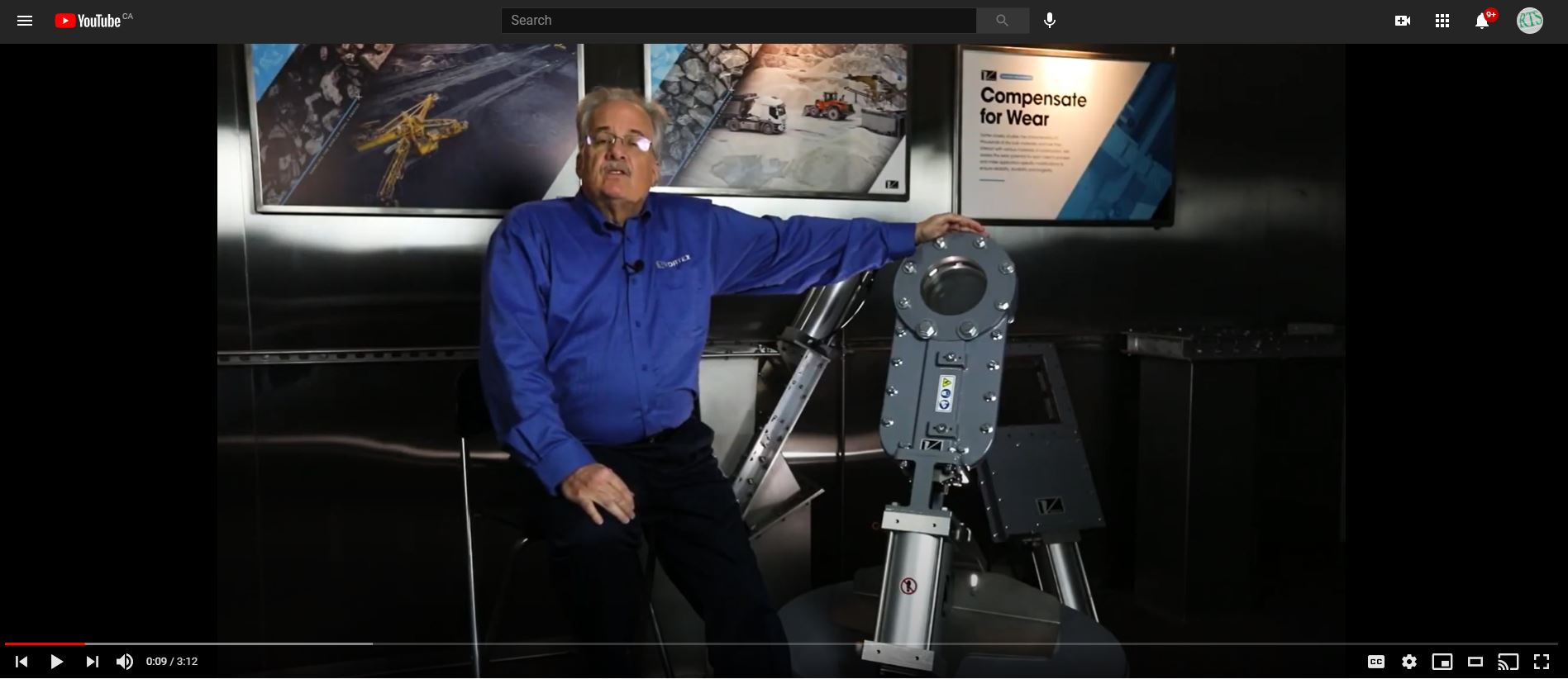DILUTE PHASE PNEUMATIC CONVEYING
HOW DOES DILUTE PHASE PNEUMATIC CONVEYING WORK?
Flexicon's PNEUMATI-CON dilute phase pneumatic conveying systems cater to a wide range of bulk material applications, from simple single-point installations to complex cross-plant systems with multiple pick-up and discharge points, and automated controls. These systems are custom-engineered to integrate seamlessly with Flexicon equipment and your process.
PNEUMATI-CON systems transport bulk materials suspended in an air stream, introduced by a positive pressure blower at the intake or a vacuum pump downstream of the discharge. The material is then separated from the air at the destination and discharged either batch-wise via butterfly or slide gate valves or continuously through rotary airlock valves.
FEATURES
Easy Conveyor Line Routing: Pneumatic Convey systems offer versatile routing options, allowing conveyor lines to be directed vertically and horizontally, over short or long distances, and through tight spaces like small holes in walls or ceilings. This makes them easy to integrate into production environments with limited floor space and various obstacles.
Versatility in Handling Products: A single pneumatic conveyor can handle a wide variety of materials, from powders with diverse bulk densities to flakes, pellets, capsules, and tablets, providing the flexibility to transport multiple ingredients within the same system.
Complete Material Evacuation: Pneumatic Convey systems ensure total evacuation of both the discharge vessel and the conveyor line, minimizing cross-contamination in multi-ingredient systems. This full transfer of materials guarantees accurate batch ingredients by weight, enhancing product quality and reducing waste.
Wide Capacity Range: The capacity of Pneumatic Conveyors can vary from a few pounds to tens of tons per hour, serving destinations from small packaging lines to large silos and railcars. The system can handle feed rate fluctuations without risking damage.
Enclosed, Contamination-Free System: The fully enclosed and dust-free design of Pneumatic Convey systems prevents contamination of both the product and the plant environment, making them ideal for safely transferring sensitive materials, including dusty and hazardous products.
High Reliability and Easy Maintenance: Pneumatic Convey systems feature easily maintainable components, such as filter receivers with access doors and inspection ports, and rotary airlock valves with optional rotor support bars for easy access, cleaning, and inspection.
Mobile and Custom Configurations: Pneumatic Convey systems can include a feed hopper and/or pick-up wand, blower unit, filter receiver, and control package. These are available on caster-mounted frames for easy mobility within the plant.
Industrial and Sanitary Design Options: Pneumatic Convey systems are available in carbon steel with industrial finishes or stainless steel finished to meet the standards of industrial, food, dairy, and pharmaceutical applications. Upgrades such as quick-access and quick-disconnect fittings are also available.
SYSTEM TYPES
Positive Pressure Systems: Positive pressure dilute phase pneumatic conveying systems are used to move bulk materials from a single source to one or multiple destinations over long distances and with higher capacity than vacuum systems. They employ a positive displacement blower and rotary airlock valves to maintain pressure, moving material through the line to be separated by a filter receiver, cyclone separator, or fed directly into vented process vessels.
Vacuum Systems: Vacuum dilute phase systems are ideal for transporting materials from multiple sources, like storage vessels or trucks, to one or more destinations. They allow for easy material pick-up from open containers and are preferred for handling hazardous materials due to their superior leak containment. A vacuum pump creates negative pressure to draw materials through the system, which are then separated from the conveying air at discharge points without generating heat, making them suitable for direct feeding into enclosed process vessels.
COMPREHENSIVE PNEUMATIC SYSTEM COMPONENTS
Flexicon offers a complete selection of components for configuring your PNEUMATI-CON system, including:
- Flex-tube, wye, and plug diverters
- Rotary airlock valves in various designs and sizes
- Filter receivers and cyclone separators for all capacity needs
- Gain-in-weight and loss-of-weight batching systems
- Dust collectors and bin vents
- Controls and electrical equipment
- Hand-held pick-up wands
- Silos, day bins, and other storage vessels
MATERIAL INTAKE METHODS
Pressure and vacuum conveying systems often use rotary airlock valves to introduce materials into the air stream. Vacuum systems can also employ hand-held wands and non-flow-through (flood-feed) pick-up adapters.
Rotary Airlock Valves with Flow-Through Pick-Up Adapters (For Pressure and Vacuum Systems)
Rotary airlock valves with flow-through pick-up adapters are used in both pressure and vacuum systems to control material flow into the system while maintaining the pressure differential between the system and the ambient environment.
Non-Flow-Through (Flood-Feed) Pick-Up Adapters (For Vacuum Systems)
Vacuum systems can introduce materials through non-flow-through (flood-feed) pick-up adapters, which are ideal for manual feeding at points where lower volumes of material are involved.
Wands (For Vacuum Systems)
Hand-held pick-up wands, connected to vacuum conveyor lines with flexible hoses, are used to extract materials from containers like Gaylords, drums, paper bags, and barrels.
MATERIAL DISCHARGE METHODS
Material in pressure and vacuum pneumatic conveyors typically exits through filter receivers or cyclone separators, or discharges directly into process or storage vessels. Positive pressure systems may also use fill/pass valves to discharge material at one point or redirect it to another.
Filter Receivers (For Pressure and Vacuum Systems)
Flexicon filter receivers separate solids from the air stream using filter media and gravity, ideal for handling smaller particles that are prone to dusting or when dust containment is crucial. Located above material use points, they utilize reverse-pulse jet cleaning to ensure continuous and efficient separation.
Cyclone Separators (For Pressure and Vacuum Systems)
Cyclones use centrifugal force and gravity to separate solids from the air stream, typically for materials with larger particles that don't generate much dust. Filters can be added as a secondary method to capture airborne solids if needed.
Fill/Pass Valves (For Pressure and Vacuum Systems)
Fill/pass valves allow material to discharge directly into process vessels or be delivered to multiple destinations along a common line. The conveying line typically routes back to the material source or into a dust collection device downstream of the last valve.
Direct Discharge into Process Vessels (For Pressure and Vacuum Systems)
Both pressure and vacuum systems can directly feed materials into enclosed process vessels like blenders or reactors, which are vented to a downstream dust collection system, eliminating the need for individual filter receivers.
MANUFACTURING MATTERS PODCASTTake a Deeper Dive
Our podcast - How Dilute Phase Pneumatic Conveying Works provides an in depth dive into how manufacturing processes can benefit.
Lorem ipsum dolor sit amet consetetur Elit
Lorem ipsum dolor sit amet dolor, elit consectetuer adipiscing elit. Donec odio. Nullam malesuada erat ut...
Lorem ipsum dolor sit amet consetetur Elit
Lorem ipsum dolor sit amet dolor, elit consectetuer adipiscing elit. Donec odio. Nullam malesuada erat ut...
Lorem ipsum dolor sit amet consetetur Elit
Lorem ipsum dolor sit amet dolor, elit consectetuer adipiscing elit. Donec odio. Nullam malesuada erat ut...
Lorem ipsum dolor sit amet consetetur Elit
Lorem ipsum dolor sit amet dolor, elit consectetuer adipiscing elit. Donec odio. Nullam malesuada erat ut...
Lorem ipsum dolor sit amet consetetur Elit
Lorem ipsum dolor sit amet dolor, elit consectetuer adipiscing elit. Donec odio. Nullam malesuada erat ut...
Lorem ipsum dolor sit amet consetetur Elit
Lorem ipsum dolor sit amet dolor, elit consectetuer adipiscing elit. Donec odio. Nullam malesuada erat ut...




